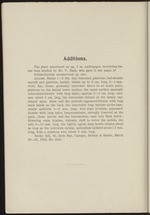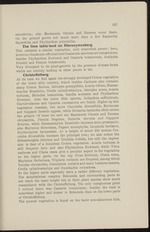| 1 |
 |
“...Stems 1—2 dm. tall, branched, glabrous; leaf-sheaths
smooth and glabrous, keeled; blades up to 8 cm. long, 3—4 mm.
wide, flat, linear, gradually narrowed above to an acute point,
glabrous on the keeled lower surface, the upper surface sparingly
tuberculate-hirsute with long hairs; spathes 2—3 cm. long; race-
mes about 2 cm. long, the internodes oblique at the deeply cup-
shaped apex, these and the pedicels appressed-hirsute with long
hairs below on the back, the internodes long barbate at the base;
sessile spikelets 5—6 mm. long; first scale involute, appressed-
hirsute with long hairs, long-acuminate, strongly 2-nerved at the
apex, these nerves and the intermediate ones very faint below;
flowering scale hyaline, delicate, cleft to below the middle, the
awn 8—12 mm. long, the tightly spiral deep brown column about
as long as the yellowish subula; pedicellate spikelet about 1.5 mm.
long, with a scabrous awn about 3 mm. long.
Rocky hill, St. Joris Bay, Curasao, Britton & Shafer, March
20—27...”
|
|
| 2 |
 |
“...ground grows not much more than a few Euphorbia
thymifolia and Phyllanthus polycladus.
The lime table land on Hieronymusberg.
This contains a similar vegetation, only somewhat poorer; here,
however, Guaiacum officinale and Guaiacum sanctum are conspicuous,
besides Phyllanthus Euwensii and Casearia bonairensis, Acalypha
Poiretii and Pisonia bonairensis.
Very divergent in its plant-growth by the presence of some forms
which are entirely lacking in other places is the
Christoffelberg. _ .
At its base we find again the strongly developed Croton vegetation
of the lower hilly country, which besides Cactuses also contains
many Croton flavens, Jatropha gossypifolia, Acacia villosa, Haema-
toxylon Brasilettq* Cordia cylindrostachya, Jatropha urens, Acacia
tortuosa, Melochia tomentosa, Randia aculeata and Phyllanthus
Euwensii. Also the lower Sida species, Indigofera suffrutieosa,
Convolvulaceae and Opuntia curassavica are found. Higher up this
vegetation remains, but more Coccoloba diversifolia,...”
|
|
